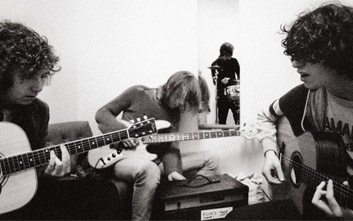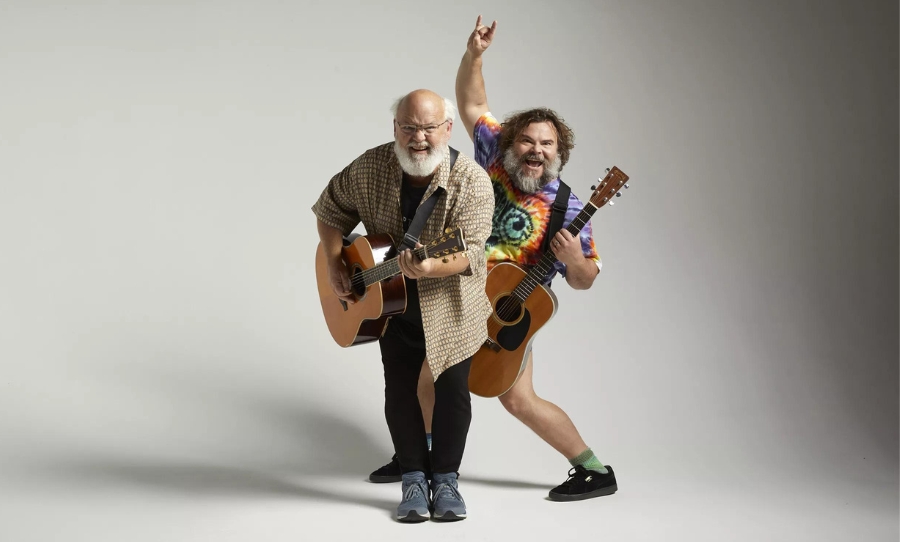Do you want to go to the seaside? It’s hard to convey the true romance of that statement to anyone who didn’t grow up in the UK; how that one simple question is so simply evocative of windswept shingle, scudding clouds, scarves and cheap ice cream cones.
It’s the same question that opens The Kooks’ 2006 debut album Inside In/Inside Out, and so ushers in one of the most evocative albums of recent British music.

Bathed in an unobtrusive British swagger and the banality of new age romance, The Kooks set a soundtrack to life as we knew it with Inside In/Inside Out.
The mid 2000s were soundtracked by a golden era in indie rock; bands like Arctic Monkeys, Bloc Party and The Libertines drew the spotlight back to Britain as the home of guitar music. Memories may well have assumed a rosy tint during the decade since those days, but it sticks in my mind as a brilliant and naively hedonistic time.
Guitar music was energetic enough to dance to, melding with new rave in bands like Hadouken! and indie nights were the best time you could have up in North London.
It was during these years that The Kooks formed, in the seaside town of Brighton as students of the Brighton Institute of Modern Music. Frontman Luke Pritchard wound up there after studying at both Bedales and the BRIT School.
The former was a progressive, posh boarding school of choice for celebrity offspring like Lily Allen, offering a unique curriculum featuring ‘Outdoor Work’ and ‘Life Assertion’ lessons. And the BRIT School has produced an array of names, like Adele and Amy Winehouse. It was here that Pritchard met fellow Kooks member Hugh Harris.
During their years at BIMM, Pritchard got bassist Max Rafferty in on what began as a school music project with himself and Harris. Rafferty proved to be one of the strongest writers in the band, contributing much of what went into Inside In/Inside Out.
Pritchard describes their formation as “a whim really”, however they soon pulled together a pretty strong demo, with a view to finding gigs.
Not many bands can claim to have been signed off the back of their first show, and yet that is pretty much what happened for The Kooks. After just four months playing together, they signed to Virgin Records. Unwilling to dive straight into an album, the young Kooks toured and wrote while they found their feet.
So when they finally did get into the studio, producer Tony Hoffer needed “an incredible amount of patience” to shape an album from the hundreds of songs the band put forward.
What came out of those sessions were fourteen tracks of loose, charming and energetic music. Revisiting Inside In/Inside Out, the beauty of ‘the album’ becomes apparent once again. Today our music consumption is focused on feeling and a vibe, we soundtrack our lives through Spotify with Morning Coffee, or Just Chill. I doubt we realised it at the time, but albums like Inside In/Inside Out became our soundtrack in a far more enduring sense.
From the first encounter with You Don’t Love Me; the hefty riffs moving nearly too fast, the imperfect vocals with just a touch of a West Country accent, there was something infectious and irresistible. Pritchard’s voice running slipshod over the lyrics and rife with emotion, the cranky little guitar solo and the slightly frenetic energy. It’s a song that epitomises how indie rock was so appealing, and so danceable.
Inside In/Inside Out was released on 23 January 2006 – the exact same day as the Arctic Monkeys’ industry changing debut Whatever People Say I Am, That’s What I’m Not. Looking back that seems like the craziest decision ever, but The Kooks later explained:
“God bless the Arctic Monkeys because if it wasn’t for them we wouldn’t have been so shielded. We were so overshadowed by the success [of Whatever People Say I Am, That’s What I’m Not] because it was so monster and we crept in behind everybody’s back.”
And while I Bet You Look Good On The Dancefloor could be said to the fill the same hole as songs like You Don’t Love Me, The Kooks established a very different place for themselves. Songs like Seaside and Sofa Song saw them leaning heavily on acoustic guitar alongside electric, and a drumming style with far more swing and roots to it than many of their rock contemporaries. Helped along by Pritchard’s vaguely lazy articulation, The Kooks set themselves alongside The Libertines with off-the-wall yet poetic lyrics.
Part of The Kooks’ charm came out of their sheer Britishness; kitchen sink dramas and their ability to attach sentiment to the mundane. Perhaps it comes from the natural British aptitude toward self-deprecation, but songs like Naive and She Moves In Her Own Way are gloriously understated. And in a way indie rock was gloriously honest, but not just in its painted images of gritty life and your bog standard Friday night out. Musically, these were bands who were making the best of what they could do; they weren’t perfect but they had energy and – most importantly – they could write a song which a field full of people would want to sing along to.
Listening through Inside In/Inside Out, there really isn’t any question – I really do want to go to the seaside. To dance to guitar music in clubs and to hear a room full of people drunkenly, happily belting out ‘“Ooh la, she was such a good girl to me!”
Five albums later, and unsurprisingly The Kooks have moved in their own way as they grew. But that first record still easily holds its own in their catalogue, and is perhaps a testament to a young band who were given half a chance.
The Kooks are heading to Australia over New Years, check out the dates below:
Various dates – Falls Music and Arts Festival – Tickets
Wed 3 Jan – Festival Hall, Melbourne – Tickets
Fri 5 Jan – Hordern Pavilion, Sydney – Tickets



